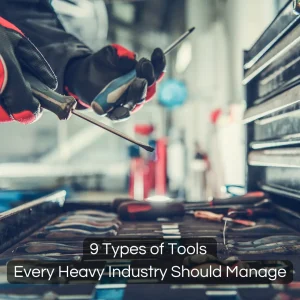9 Types of Tools Every Heavy Industry Should Manage with Tool Management Software
 Working in heavy industry – be that in manufacturing, mining, energy or infrastructure – is a high-stakes business. Production is only possible if the tools and equipment needed to operate the machinery, equipment and production lines are available and fit for purpose. On the factory floor or in the mine or at the worksite, it’s not just the ability of technicians and the efficiency of machines that ensures productivity and smooth-running operations: at a basic level, it’s the availability of the right tools at the right time and in the right condition. Simple hand tools, testing equipment, and specialist devices and instruments are all necessary to keep the daily activities of industrial operations running and any failure in their availability or functionality can interrupt workflows, resulting in time and cost overruns, safety incidents, or in a total shutdown of production.
Working in heavy industry – be that in manufacturing, mining, energy or infrastructure – is a high-stakes business. Production is only possible if the tools and equipment needed to operate the machinery, equipment and production lines are available and fit for purpose. On the factory floor or in the mine or at the worksite, it’s not just the ability of technicians and the efficiency of machines that ensures productivity and smooth-running operations: at a basic level, it’s the availability of the right tools at the right time and in the right condition. Simple hand tools, testing equipment, and specialist devices and instruments are all necessary to keep the daily activities of industrial operations running and any failure in their availability or functionality can interrupt workflows, resulting in time and cost overruns, safety incidents, or in a total shutdown of production.
When you manage those assets manually or across disjointed systems, you’re likely to run into problems. Tools can get lost or hoarded by teams; critical equipment can go out of calibration, causing teams to do work that isn’t precise or safe; and safety equipment can expire and be used by workers unknowingly, putting them at risk. Inventory can also increase erratically (causing overstock), or deplete suddenly (causing critical shortages), and spare parts can be unavailable when needed for emergency repairs. These inefficiencies don’t just waste time – they cost companies money and damage their reputation.
And this is where tool management software can assist you. It has features like intelligent inventory tracking, automated maintenance notifications and real-time usage logs to help organisations take control of their assets, improve uptime, reduce costs and improve safety.
Below we take a look at 9 categories of tools and equipment used in common heavy industries that can be managed using tool management software.
- Hand Tools
Examples: Wrenches, hammers, pliers, screwdrivers, torque wrenches
Why They Matter: They’re the nuts and bolts that hold daily maintenance and repair operations together. Each tool is inexpensive but adding up tool losses or misplacements can become expensive fast.
How Tool Management Helps:
- Identify who checked out a tool and when.
- Eliminate tool hoarding and misplacement.
- Track calibration cycles for precision tools (such as torque wrenches)
- Power Tools & Accessories
Examples: Drills, saws, angle grinders, impact drivers, hydraulic bolting tools, rechargeable batteries.
Why They Matter: Heavy-duty tools keep you productive and efficient—but they need maintenance and management.
How Tool Management Helps:
- Schedule maintenance before a breakdown happens
- Monitor battery cycles and wear-and-tear
- Record usage history for replacement planning
- Health & Safety Equipment (PPE)
Examples: Helmets, goggles, gloves, respirators, fire extinguishers
Why They Matter: Safety equipment is a non-negotiable item in industrial work areas. Improper management can lead to compliance violations and worker health risks.
How Tool Management Helps:
- Track expiration dates and replacement schedules
- Verify presence at all required workstations
- Maintain audit trails for safety inspections
- Specialized Tools
Examples: Welding equipment, non-destructive testing (NDT) tools, precision pipe cutters, micrometres.
Why They Matter: Specialised tools are often only operated by trained individuals, with high quality control. They are expensive and directly related to high-precision work.
How Tool Management Helps:
- Store user certification records (e.g. welding qualifications)
- Ensure correct calibration and storage conditions
- Avoid equipment misuse by restricting access
- Materials and Consumables
Examples: Welding rods, lubricants, fasteners, adhesives, solvents
Why They Matter: They are common items that are needed on nearly every project, so if you’re out of them production stops. But if you overstock them, you are just tying up capital and storage space.
How Tool Management Helps:
- Define min/max stock levels
- Automatically reorder items when supplies are low
- Monitor usage and flag overconsumption
- Spare Parts and Components
Examples: Bearings, gaskets, valves, gear assemblies
Why They Matter: Production downtime waiting on critical spares parts is costly. Fast access and accurate tracking are essential.
How Tool Management Helps:
- Keep categorised, searchable databases of spare parts
- Quickly find parts when a machine goes down
- Know when high-priority items are out of stock
- IT and Communication Equipment
Examples: Rugged laptops, radios, GPS units, handheld scanners
Why They Are Important: Communication and coordination are vital in operations, and tech tools can enhance situational awareness and efficiency.
How Tool Management Helps:
- Keep track of who has which devices
- Monitor battery life and usage frequency
- Track repairs and replacements
- Calibration and Testing Equipment
Examples: Pressure gauges, flow meters, laser alignment tools, thermocouples
Why They Matter: Precision is essential in the industrial workplace. Faulty measuring tools can lead to improper installations, safety hazards, or lost work.
How Tool Management Helps:
- Set automatic calibration reminders and compliance reporting
- Store calibration certificates and logs
- Identify out-of-tolerance tools before they are issued
- Employee and Contractor Tools
Examples: Personal toolkits, ID cards, RFID access badges, safety keys
Why They Matter: When multiple people use tools and equipment, it’s important to know who’s responsible.
How Tool Management Helps:
- Assign tools and access badges to specific people
- Track which ones get returned, lost, or replaced
- Increase security and deter unauthorised use
A missing wrench or uncalibrated meter on a high-speed production line isn’t just an inconvenience – it’s a process bottleneck or safety issue in the making. Tracking them manually is laborious and error prone.
By empowering your organisation with a reliable tool management software like CRIBWISE, you gain following benefits –
- Live view of your inventory
- Automatic notifications when maintenance, calibration or reordering is due
- Full traceability, for any type of asset
- Actionable usage insights for informed decision making
Investing in a tool management software and solution is not just about keeping your tools in order, it’s an investment in unlocking your organisation’s operational excellence. Contact us today and find out how can we help you.


